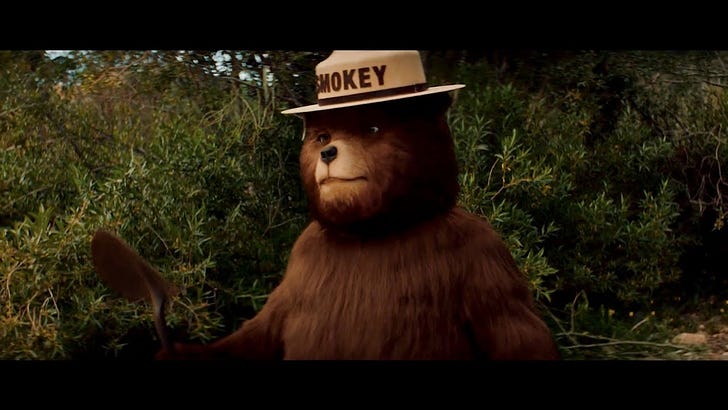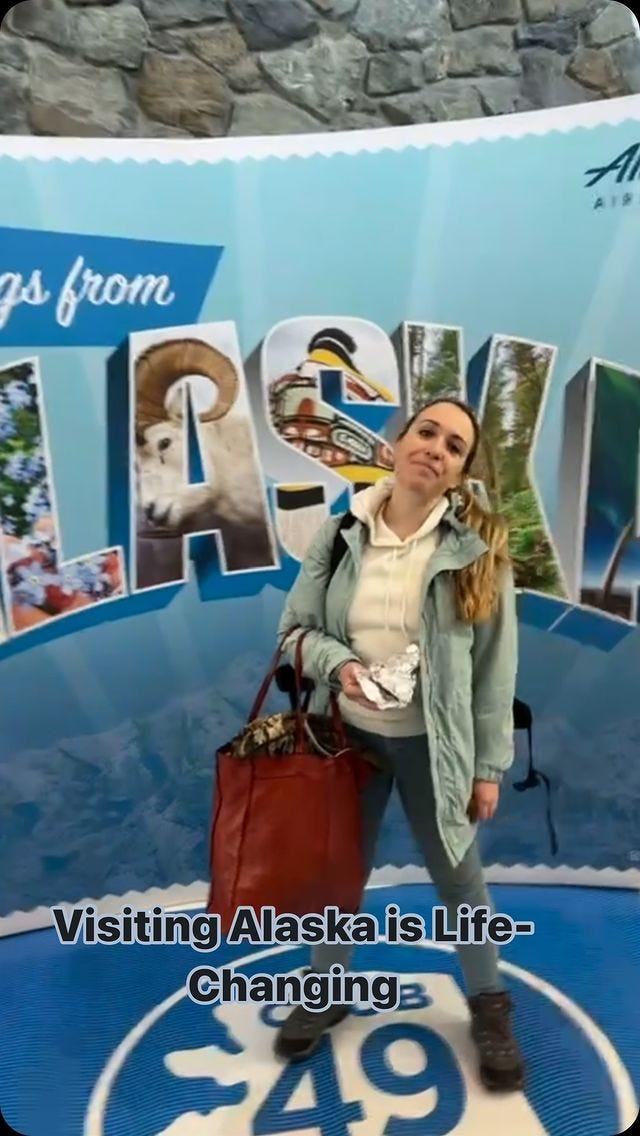Good afternoon,
For you newbies out there, welcome to Outsider on the Inside. I hope this dispatch from in and around the nation’s capital on underreported topics finds you well.
If you’re just discovering my musings, here’s a backgrounder and make sure we’re connected on Facebook, Instagram, Twitter, and YouTube.
Quick Thoughts
Support and follow the work of IWF’s Center for Energy and Conservation today if you haven’t already.
I’m getting through DC Area storms listening to the deluxe version of Kacey Musgraves’ Deeper Well album.
Sectorial bargaining is a scary proposal.
Nantucket residents want to unburden themselves of offshore wind.
These bipartisan lawmakers dress better than VP Harris’ running mate.
Duke’s Mayo is America’s best mayo, says Food & Wine Magazine.
That’s all for now. Stay tuned for the next dispatch next week!
Smokey Bear at 80
Only YOU can prevent wildfires, says Smokey Bear. This message has been heard by millions of people for 80 years. This is America’s most famous bear, as he and his PSA are displayed on our public lands and TV commercials.
How did Smokey come to be? The beloved character is a namesake of an actual bear rescued from a New Mexico wildfire. Here’s the backstory:
One spring day in 1950, in the Capitan Mountains of New Mexico, an operator in one of the fire towers spotted smoke and called the location in to the nearest ranger station. The first crew discovered a major wildfire sweeping along the ground between the trees, driven by a strong wind. Word spread rapidly, and more crews reported to help. Forest rangers, local crews from New Mexico and Texas, and the New Mexico State Game Department set out to gain control of the raging wildfire.
As the crew battled to contain the blaze, they received a report of a lone bear cub seen wandering near the fire line. They hoped that the mother bear would return for him. Soon, about 30 of the firefighters were caught directly in the path of the fire storm. They survived by lying face down on a rockslide for over an hour as the fire burned past them.
Nearby, the little cub had not fared as well. He took refuge in a tree that became completely charred, escaping with his life but also badly burned paws and hind legs. The crew removed the cub from the tree, and a rancher among the crew agreed to take him home. A New Mexico Department of Game and Fish ranger heard about the cub when he returned to the fire camp. He drove to the rancher’s home to help get the cub on a plane to Santa Fe, where his burns were treated and bandaged.
News about the little bear spread swiftly throughout New Mexico. Soon, the United Press and Associated Press broadcast his story nationwide, and many people wrote and called, asking about the cub’s recovery. The state game warden wrote to the chief of the Forest Service, offering to present the cub to the agency as long as the cub would be dedicated to a conservation and wildfire prevention publicity program. The cub was soon on his way to the National Zoo in Washington, D.C., becoming the living symbol of Smokey Bear.
Smokey received numerous gifts of honey and so many letters he had to have his own zip code. He remained at the zoo until his death in 1976, when he was returned to his home to be buried at the Smokey Bear Historical Park in Capitan, New Mexico, where he continues to be a wildfire prevention legend.
In 1952, Steve Nelson and Jack Rollins wrote the popular anthem that would launch a continuous debate about Smokey’s name. To maintain the rhythm of the song, they added “the” between “Smokey” and “Bear.” Due to the song’s popularity, Smokey Bear has been called “Smokey the Bear” by many adoring fans, but, in actuality, his name never changed. He’s still Smokey Bear.
Smokey’s messaging about good fire and forest management has improved over the years, but wasn’t always the case:
To chart this new course, we must first reckon with our past. American forest management policy for the last century has been grounded solely in fire suppression. After fires in 1910 destroyed 3 million acres in Montana, Idaho and Washington, the U.S. Forest Service adopted the approach that all fire is bad fire, and that all fire should be suppressed as quickly as possible. But the decision to let dead vegetation sit untouched for decades caused more and more of our forests to become tinderboxes.
Fire suppression created a triple-headed obstacle to change: a public wary of any type of fire; private forest owners constrained by liability concerns; and officials reluctant to approve burns, even under favorable conditions, due to potential community backlash.
Overcoming these hurdles requires more than policy tweaks — it demands a complete rewiring of our collective fire mindset. Smokey can lead the way by championing the return of good fire, to make both our forests and communities safer.
Let’s hope climate alarmists don’t engulf his legacy with nonsense. Except the L.A. Times’ climate columnist did just that last Thanksgiving:
Would it be that hard for NBC and the federal officials behind Smokey Bear to include just a little information about what we can do to stave off total climate catastrophe, in a parade broadcast watched by tens of millions of people?
…
But on the whole, Smokey is stuck in the past.
And Chris D’Angelo of HuffPost - who once said I’m “half-baked” for criticizing Greta Thunberg- bemoaned Smokey like this a few years ago: “He's our most iconic environmental crusader, but his advice is outdated, incomplete and ignores climate change.”
There’s always a climate angle. Sigh.
But I’m optimistic Smokey and USFS will fine-tune their message—especially if we get a new presidential administration that doesn’t politicize forest management.
I'm a Gun Owner and Hunter. Gov. Walz Doesn’t Speak For Me
The media tells us VP Kamala Harris’ newly-minted running mate, Minnesota Governor Tim Walz (D-MN), has a folksy demeanor.
“I spent 25 years in the Army and I hunt. I’ve been voting for common sense legislation that protects the Second Amendment, but we can do background checks. We can research the impacts of gun violence. We can make sure those weapons of war, that I carried in war, are only carried in war,” Waltz said in a recently unearthed 2018 clip.
Except he never carried AR-15s - semiautomatic rifles frequently mischaracterized as “weapons of war” - in combat. Even CNN shot down this claim from Walz.
Walz is an acceptable kind of gun owner and hunter to progressives because he capitulates to gun confiscation and refuses to defend all forms of hunting–including highly-regulated wolf management.
So the guy goes pheasant hunting with shotguns and wears blaze orange? And he signs National Hunting and Fishing Day proclamations every year. Hooray for doing the bare minimum! I - and millions of Americans - fish, hunt, and shoot guns too. But how does Waltz act beyond the bluster and “cool” midwestern dad in a camo hat persona?
Alaska Flashback
ICYMI
Articles/commentary/media appearances from the past week.
MEDIA MENTIONS
A tweet of mine on the Harris-Walz ticket landed at FoxNews.com.
ARTICLES/BLOGS
Townhall: Extreme Climate Policies Inviting High-Intensity Wildfires
IWF: Onshore Wind Development Could Impact Sage Grouse Populations
Townhall: I'm a Gun Owner and Hunter. Gov. Walz Doesn’t Speak For Me
District of Conservation
Catch up on District of Conservation episodes below.
And check out a new episode of The Sportswoman Show with Townhall.com Editor and Fox Nation host Katie Pavlich!
Thank you for reading! Let me know your thoughts and encourage your friends to subscribe to the newsletter too.
—Gabriella




